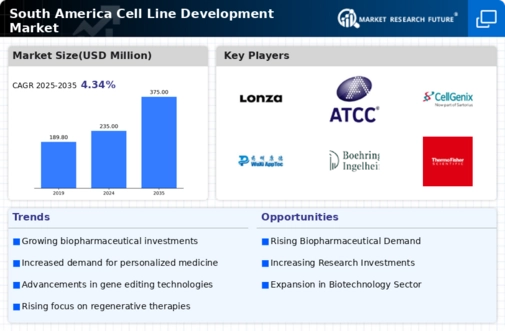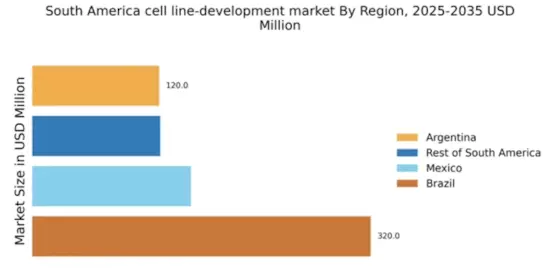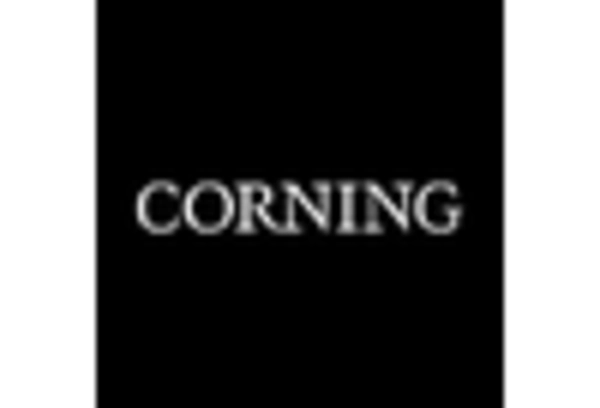Expansion of Research Institutions
The proliferation of research institutions across South America is a key driver for the cell line-development market. Countries such as Brazil and Colombia are investing heavily in academic and research facilities, which are essential for advancing biotechnological research. These institutions are increasingly collaborating with industry players to develop novel cell lines for various applications, including drug discovery and toxicology testing. The number of research publications related to cell line development has increased by over 30% in the last three years, reflecting a growing interest in this field. This expansion of research capabilities is expected to bolster the cell line-development market by providing a steady pipeline of innovative solutions.
Growing Focus on Personalized Medicine
The shift towards personalized medicine is significantly influencing the cell line-development market in South America. As healthcare providers increasingly adopt tailored treatment approaches, the demand for specific cell lines that can mimic patient responses is rising. This trend is particularly evident in countries like Argentina and Chile, where healthcare systems are beginning to integrate personalized therapies. The market for personalized medicine is projected to grow at a CAGR of 15% over the next five years, indicating a robust opportunity for cell line developers to create specialized products that cater to this evolving landscape. This focus on individualized treatment is likely to drive innovation within the cell line-development market.
Increasing Investment in Biotechnology
The cell line-development market in South America is experiencing a surge in investment from both public and private sectors. Governments are recognizing the potential of biotechnology to drive economic growth and improve healthcare outcomes. For instance, Brazil has allocated approximately $200 million to support biotechnology research and development initiatives. This influx of capital is likely to enhance the capabilities of local companies in the cell line-development market, enabling them to innovate and expand their product offerings. Furthermore, as investment increases, it is anticipated that the region will attract more international players, fostering a competitive environment that could lead to advancements in cell line technologies.
Emergence of Startups and Innovation Hubs
The emergence of startups and innovation hubs in South America is reshaping the landscape of the cell line-development market. Cities like São Paulo and Santiago are becoming hotspots for biotech startups, fostering a culture of innovation and entrepreneurship. These startups are often focused on developing cutting-edge technologies and novel cell lines that address specific market needs. The number of biotech startups in the region has increased by over 25% in the past two years, indicating a vibrant ecosystem that supports growth and collaboration. This influx of new ideas and technologies is expected to drive competition and innovation within the cell line-development market.
Rising Demand for Vaccines and Therapeutics
the market is witnessing heightened demand for vaccines and therapeutics in South America., driven by an increasing awareness of public health issues. The region has seen a rise in infectious diseases, prompting governments and health organizations to prioritize vaccine development. For example, Brazil has initiated several vaccine development programs, which require robust cell lines for production. The market for vaccines is projected to reach $1 billion by 2027, indicating a substantial opportunity for cell line developers to supply the necessary biological materials. This growing demand for vaccines and therapeutics is likely to propel advancements in the cell line-development market.


















Leave a Comment